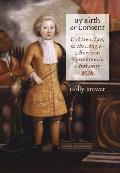Britain’s Forty American Colonies
This month I listened in on some of the sessions of the American Philosophical Society’s “Meanings of Independence” conference.
One of the panelists was Prof. Holly Brewer of the University of Maryland, author of By Birth or Consent: Children, Law, and the Anglo-American Revolution in Authority, published in 2005 and winner of three major prizes in the specialty of legal history.
Brewer mentioned her growing website on “Slavery, Law, and Power” in the Revolutionary period. As a taste of the features on that site, here’s a map of the British Empire in the Americas at the time of the Revolution, labeling all the colonies.
In recent years it’s become common to note that there were twenty-six British colonies in North America, so the thirteen mainland colonies that broke away were only half of the total. I’ve used the number twenty-six myself. It came up in the debate between Woody Holton and Gordon Wood that I also listened to this month and will discuss later.
However, Brewer counts forty British colonies, large and small, on that map. Her explanation of that count, which appears under the teal button with the horizontal line segments, begins: “Note that it is surrounded by a question of whether to count each colony separately or to count administrative units. I vote for the latter, since the 13 colonies that rebelled would be only 9 administrative units if counted separately. If we count them as 13, then the entire number should be 40.”
And those forty colonies are—
The thirteen colonies that rebelled (if going by administrative units, the four New England colonies are one, and Delaware disappears into Pennsylvania)
Barbados
Mosquito Coast
St. Lucia
Bermuda
One of the panelists was Prof. Holly Brewer of the University of Maryland, author of By Birth or Consent: Children, Law, and the Anglo-American Revolution in Authority, published in 2005 and winner of three major prizes in the specialty of legal history.
Brewer mentioned her growing website on “Slavery, Law, and Power” in the Revolutionary period. As a taste of the features on that site, here’s a map of the British Empire in the Americas at the time of the Revolution, labeling all the colonies.
In recent years it’s become common to note that there were twenty-six British colonies in North America, so the thirteen mainland colonies that broke away were only half of the total. I’ve used the number twenty-six myself. It came up in the debate between Woody Holton and Gordon Wood that I also listened to this month and will discuss later.
However, Brewer counts forty British colonies, large and small, on that map. Her explanation of that count, which appears under the teal button with the horizontal line segments, begins: “Note that it is surrounded by a question of whether to count each colony separately or to count administrative units. I vote for the latter, since the 13 colonies that rebelled would be only 9 administrative units if counted separately. If we count them as 13, then the entire number should be 40.”
And those forty colonies are—
The thirteen colonies that rebelled (if going by administrative units, the four New England colonies are one, and Delaware disappears into Pennsylvania)
- Massachusetts (including Maine, of course)
- New Hampshire
- Connecticut
- Rhode Island
- New York (including Vermont, though New Hampshire would disagree)
- New Jersey (East and West Jersey were united in 1702)
- Pennsylvania
- Delaware (had its own legislature but shared a governor with Pennsylvania and was considered part of that unit until 1776)
- Maryland
- Virginia
- North Carolina
- South Carolina
- Georgia
- Cape Breton Island
- Newfoundland
- Nova Scotia
- Prince Edward Island
- Quebec
- Rupert’s Land
- East Florida
- West Florida
- West (Indian Territory), after 1763 a separate unit
- St. Christophers
- Antigua
- Barbuda
- British Virgin Islands
- Montserrat
- Nevis
- St. Vincent and the Grenadines
- Tobago
- Dominica
- Grenada
- Jamaica
- Bay Islands (administered by Jamaica)
- British Honduras (administered by Jamaica)
- Cayman Islands (administered by Jamaica)
Barbados
Mosquito Coast
St. Lucia
Bermuda


2 comments:
I think some clarification of the term "administrative units" in the context of late-colonial British America would be helpful here, John.
MA had its self-government stripped under the May 1774 Massachusetts Government Act, but were ALL the NE colonies put under Gage at that time?
Was the "Dominion of New England" resurrected in the last hours of empire in the face of the breakdown of ordinary provincial authority?
The late-seventeenth-century Dominion of New England wasn’t revived by the Crown as the Revolutionary War approached, but it may have lived on in London through a single bureaucracy dealing with the four separate New England colonies. I agree that it would be interesting to know more about how the Crown administered its provinces in the Americas.
Massachusetts didn’t lose its self-government under the Massachusetts Government Act. Rather, its self-government was pared down in significant ways: an appointed Council instead of an elected one, no town meetings without approval from the royal governor. But each town was still supposed to elect representatives to the lower house of the General Court, as well as local officials. The result was supposed to still be a mix of top-down and bottom-up authority, but more in line with most of the other British colonies in North America, which had appointed Councils. The royal governor had of course been appointed since the 1690s, and he already had legal authority to summon and adjourn the legislature.
Post a Comment